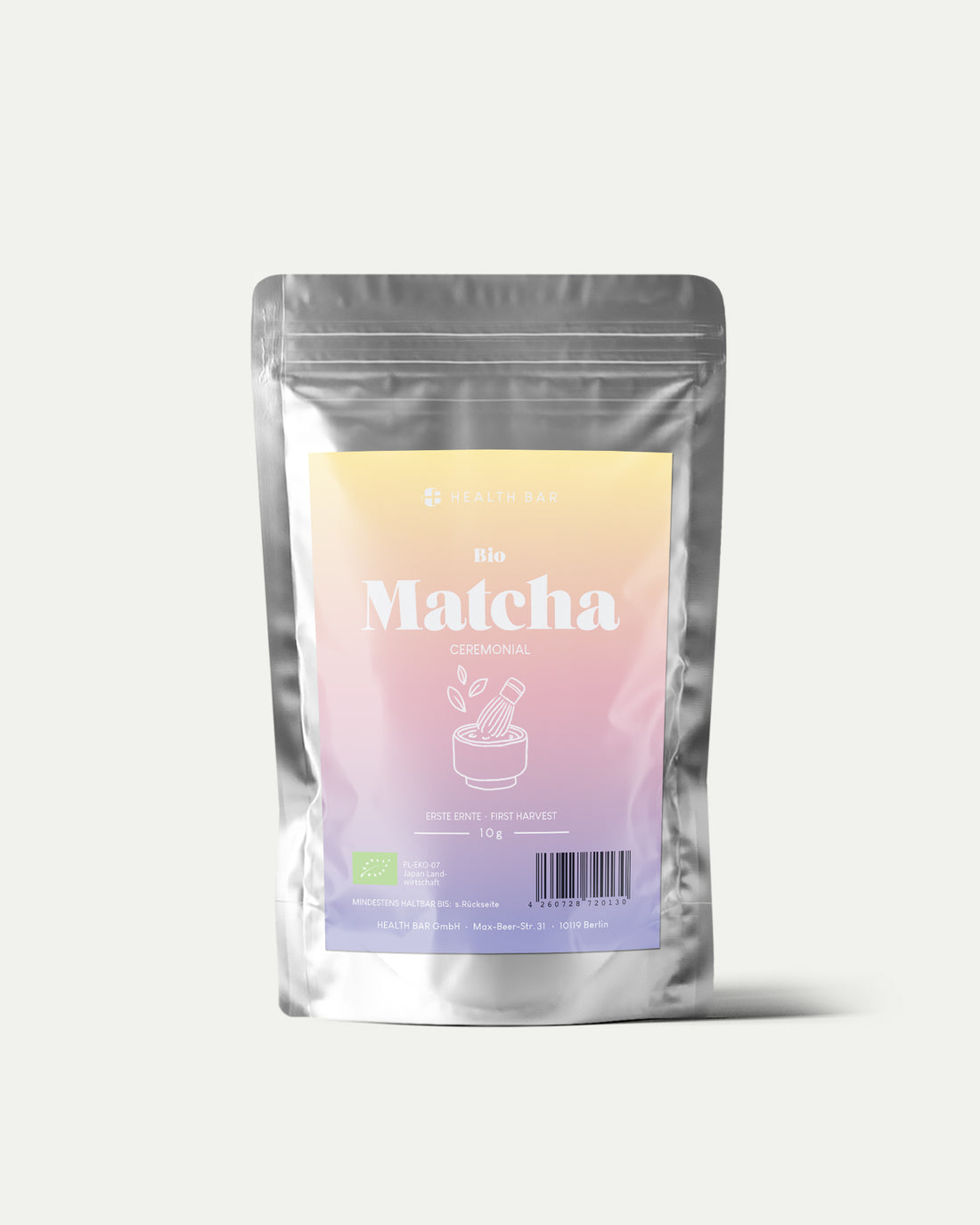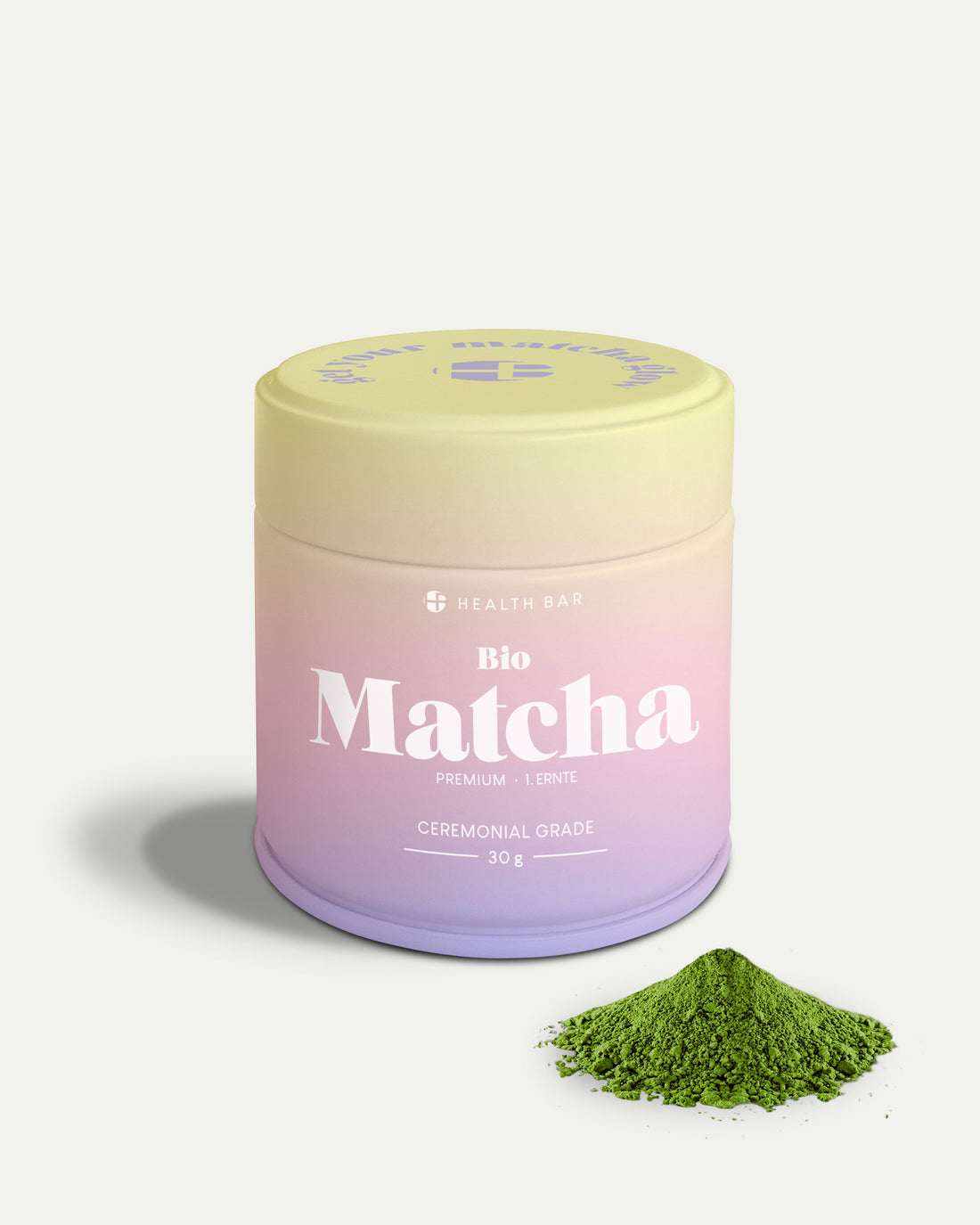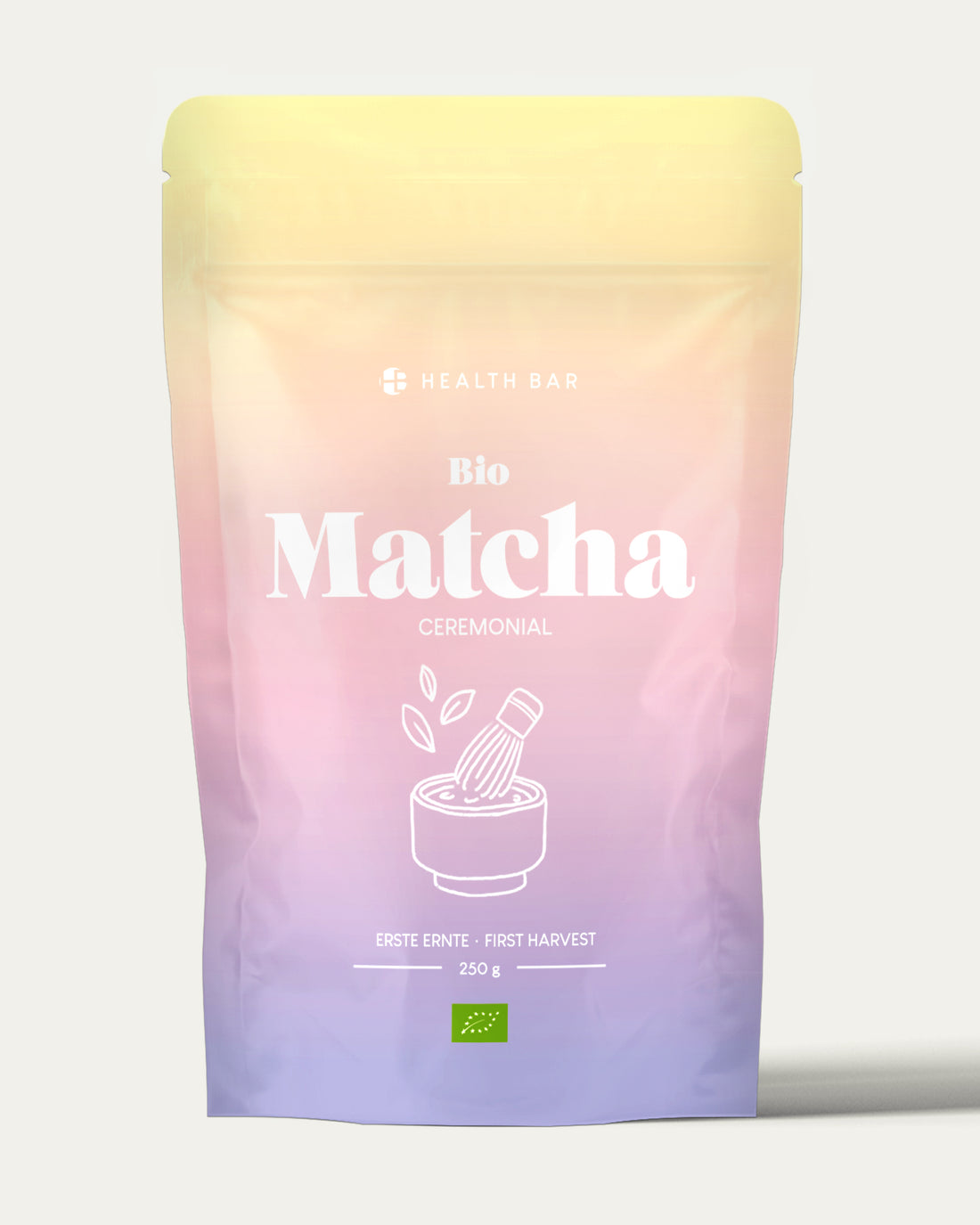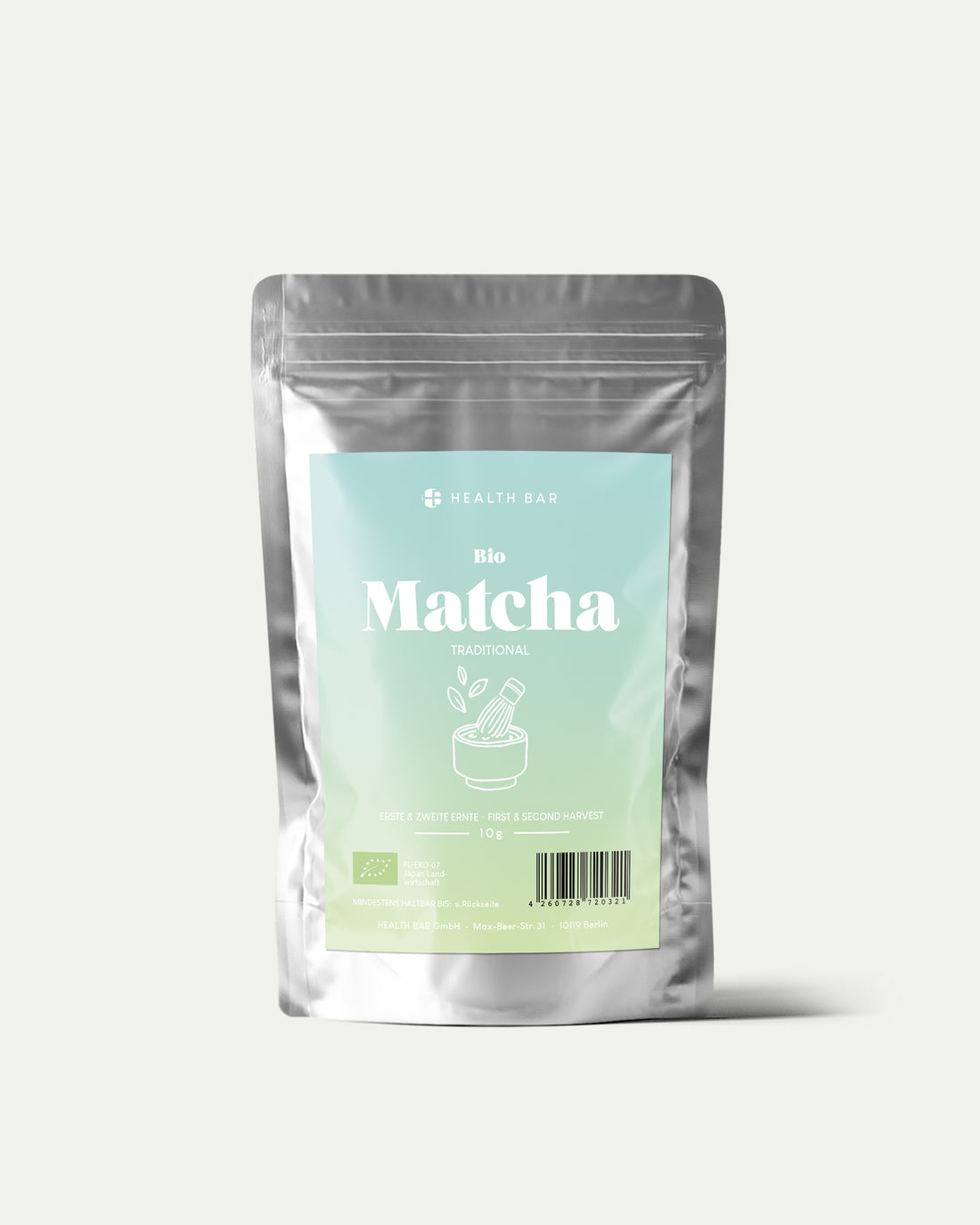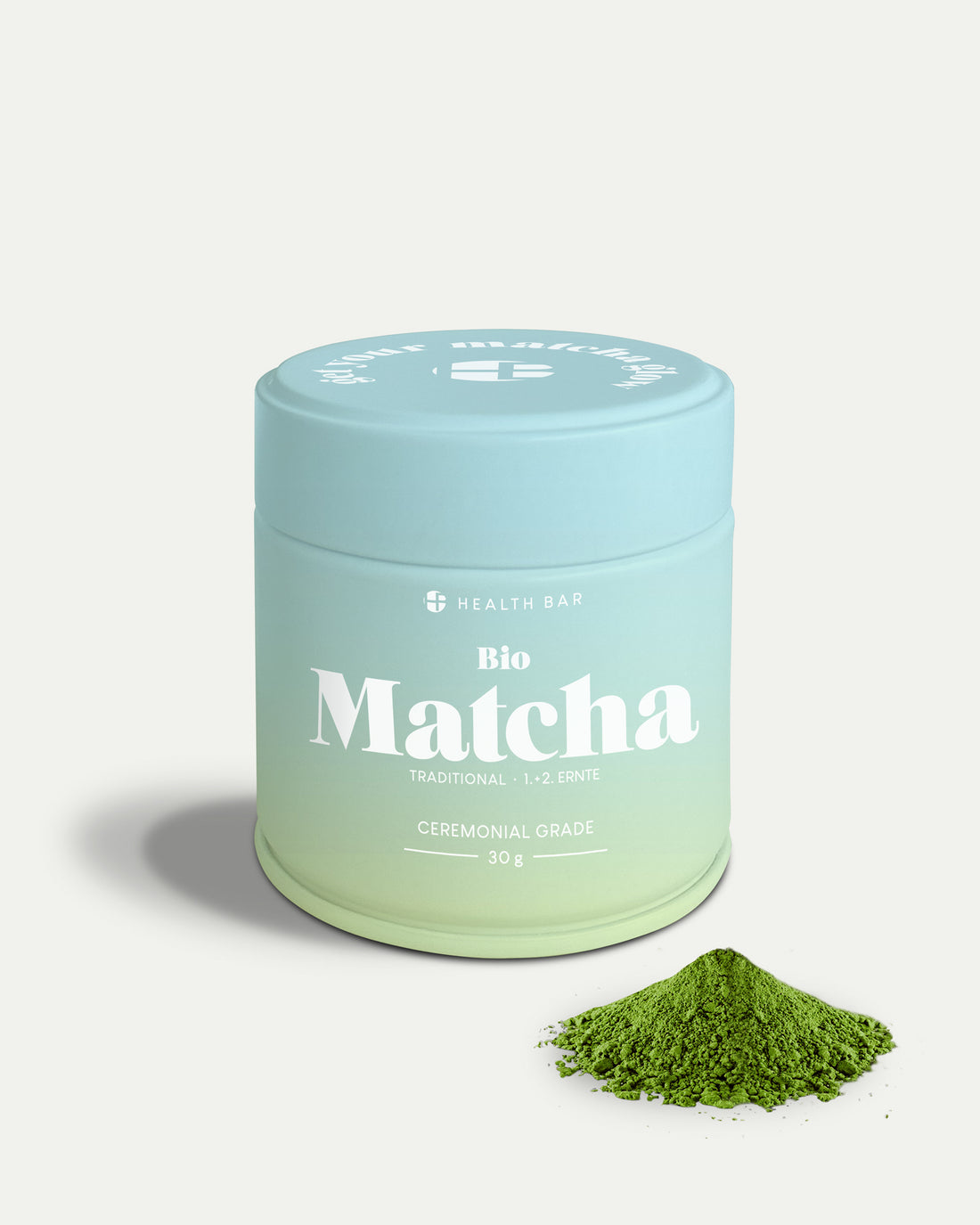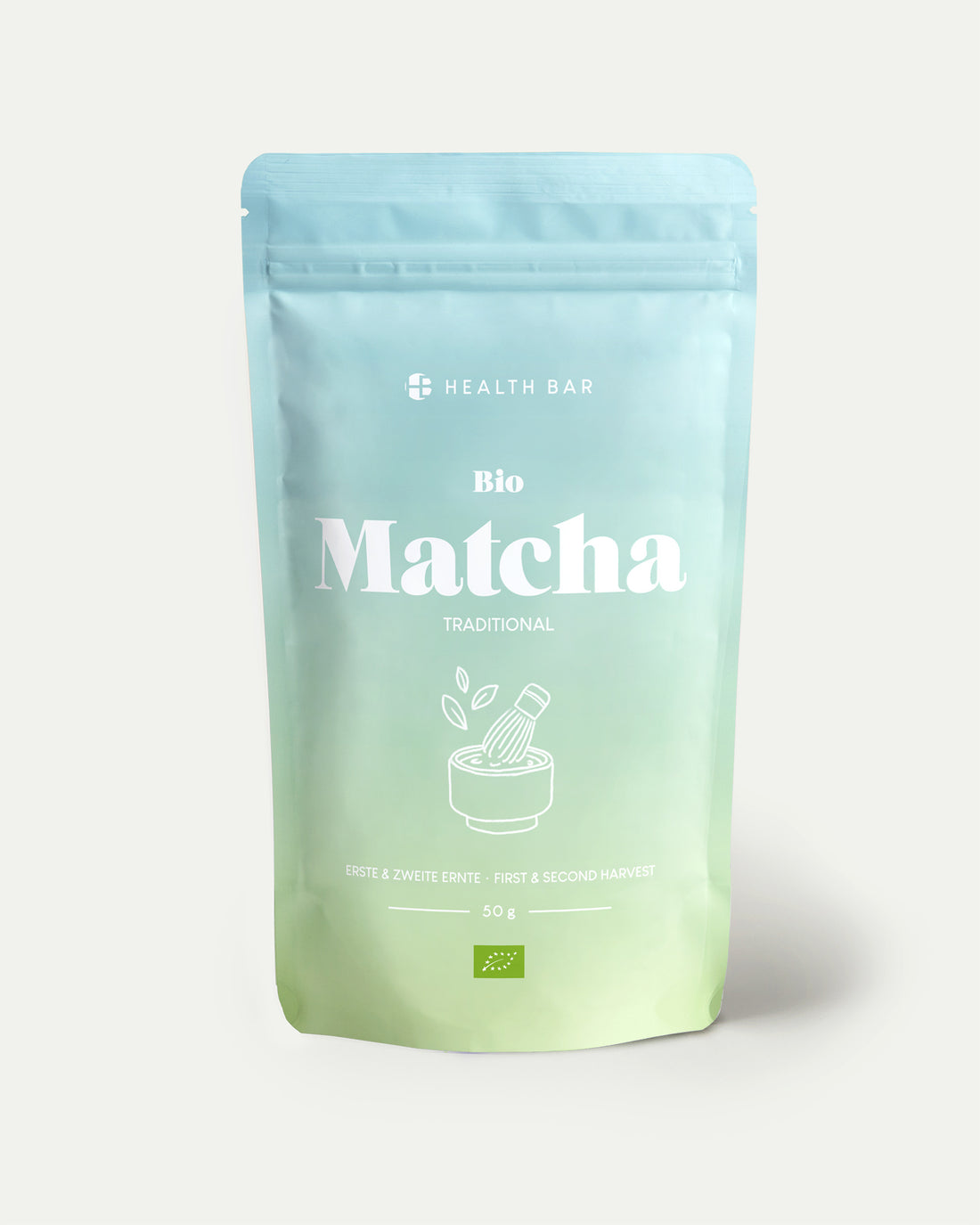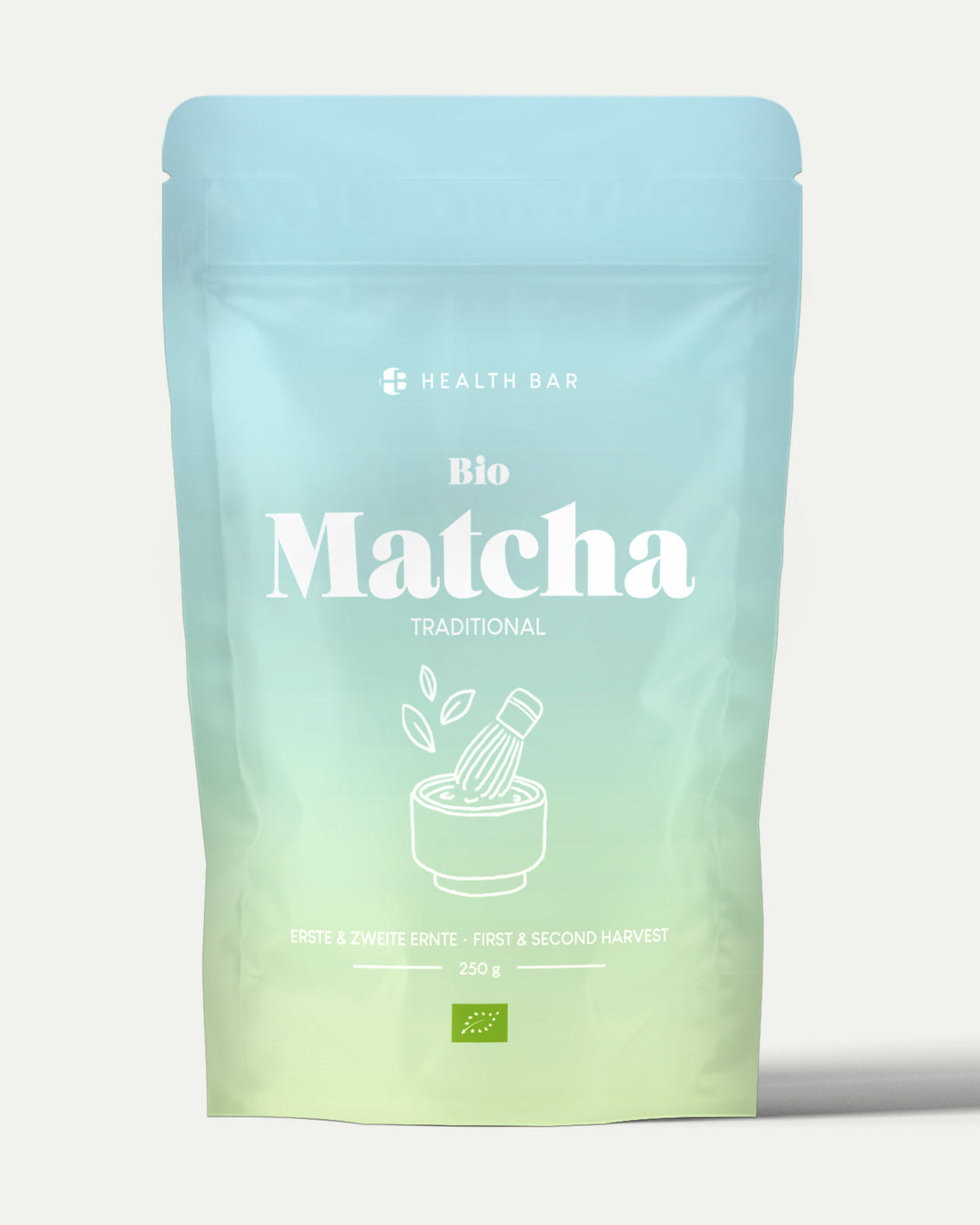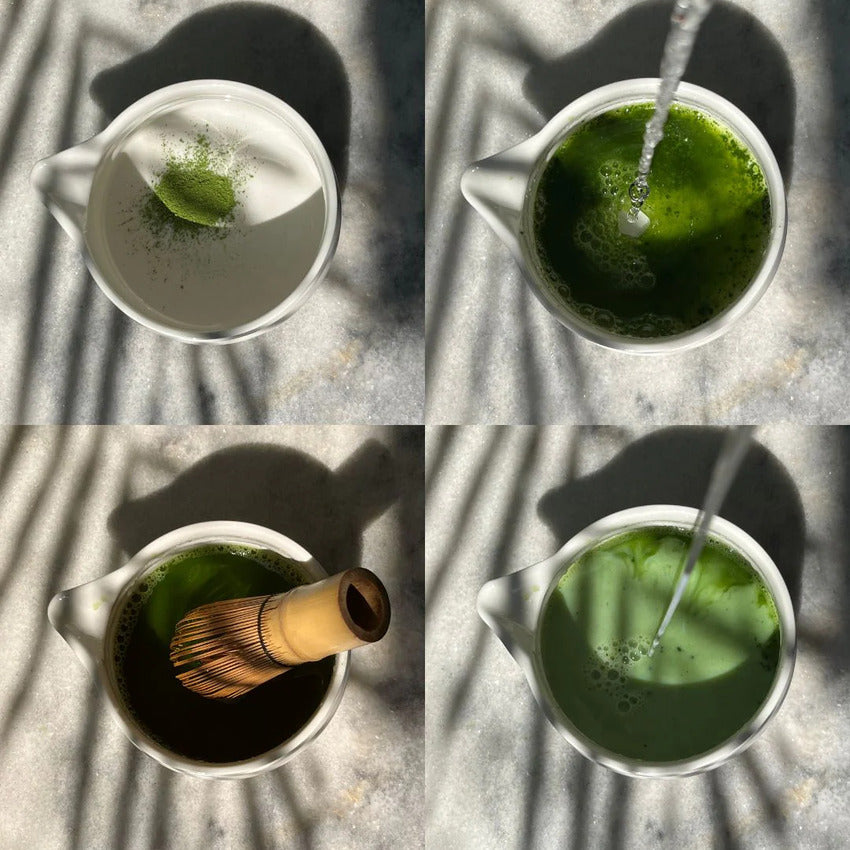
Ein Genuss für Körper und Geist
Die Kunst der Matcha-Zubereitung
Matcha, der in Japan als grünes Gold bezeichnet wird, erfreut sich unter Tee-Liebhabern weltweit einer wachsenden Beliebtheit. Die Zubereitung des einzigartigen Getränks mit seinen vielseitigen Geschmacksnuancen bietet nicht nur einen Energiekick am Morgen, sondern auch einen Moment der Ruhe und Ausgeglichenheit. Entdecke mit uns den köstlichen grünen Tee aus Japan und erfahre, wie er traditionell zubereitet wird.
Anleitung zur Zubereitung eines traditionellen Matcha-Tees
Der Akt der Matcha-Zubereitung ist ein tief verwurzeltes Ritual, das Achtsamkeit und Respekt gegenüber der jahrhundertealten Tradition ausdrückt. Es ist eine Kunstform, die Konzentration und Sorgfalt erfordert, und zugleich eine Einladung, sich einen Moment der Ruhe zu gönnen. Die folgende Anleitung führt dich durch die traditionellen Schritte, um einen authentischen Matcha-Tee zu Hause aufzubrühen
-
Benötigte Utensilien
Für die klassische Zubereitung von Matcha werden spezielle Utensilien verwendet, die das Erlebnis der Zeremonie und den Geschmack des Tees optimieren. Eine Matcha-Schale, ein Bambusbesen und ein Bambuslöffel sind unverzichtbar, um den Tee nach traditioneller Art zuzubereiten. Die Werkzeuge erleichtern das Anrühren, fördern die tiefgreifende Verbindung zur Teezeremonie und helfen dabei, ein authentisches Matcha-Erlebnis zu kreieren.
-
Checkliste für die Matcha-Zubereitung
Unser Matcha hat eine so hohe Qualität, dass du kein Sieb benötigst: Mehr Informationen
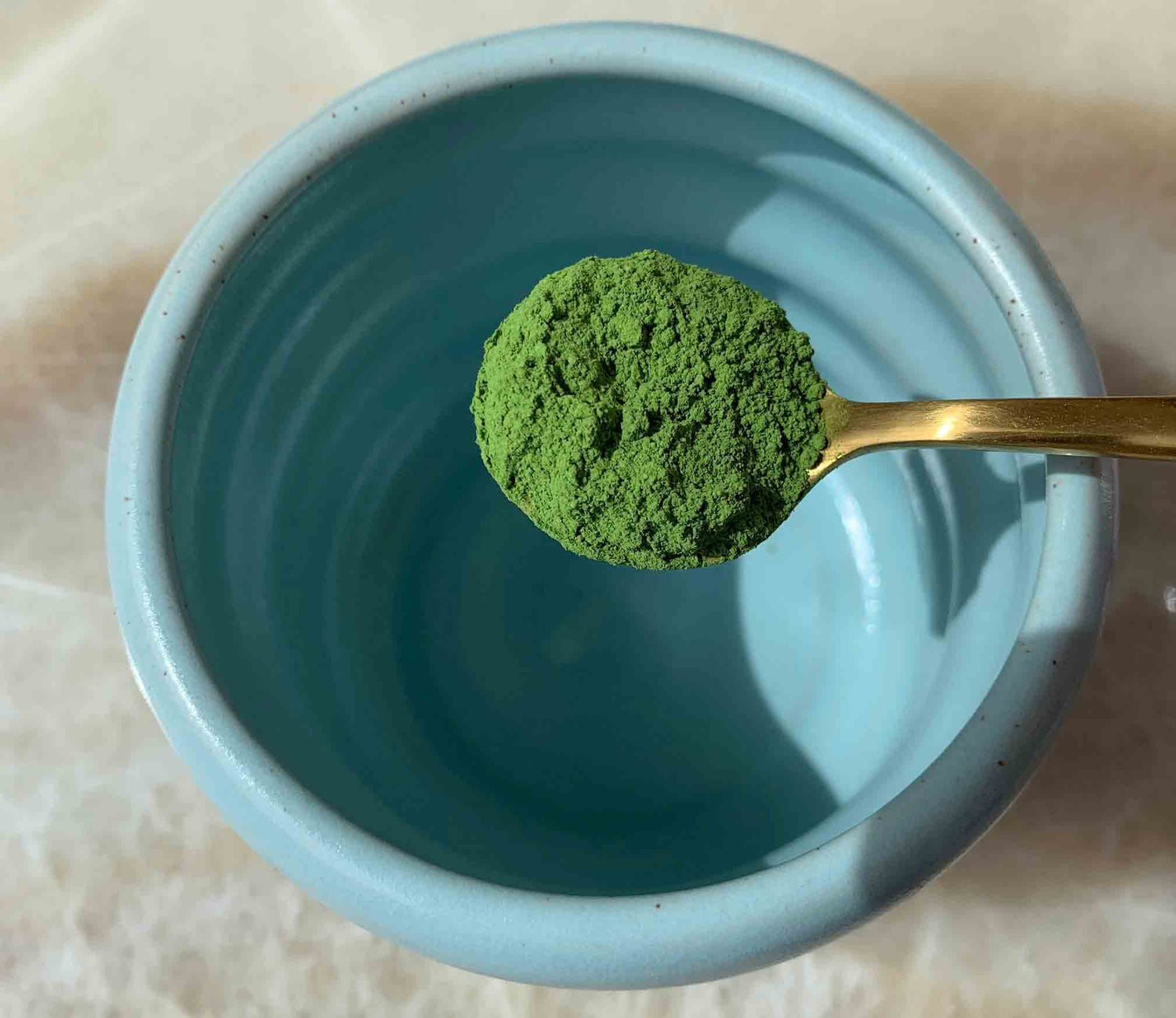
1. Matcha dosieren
Benutze den Chashaku Bambuslöffel oder einen Teelöffel, um 1–2 leicht gehäufte Teelöffel Matcha in deinen Chawan zu geben. Unser Matcha muss dabei übrigens nicht gesiebt werden.
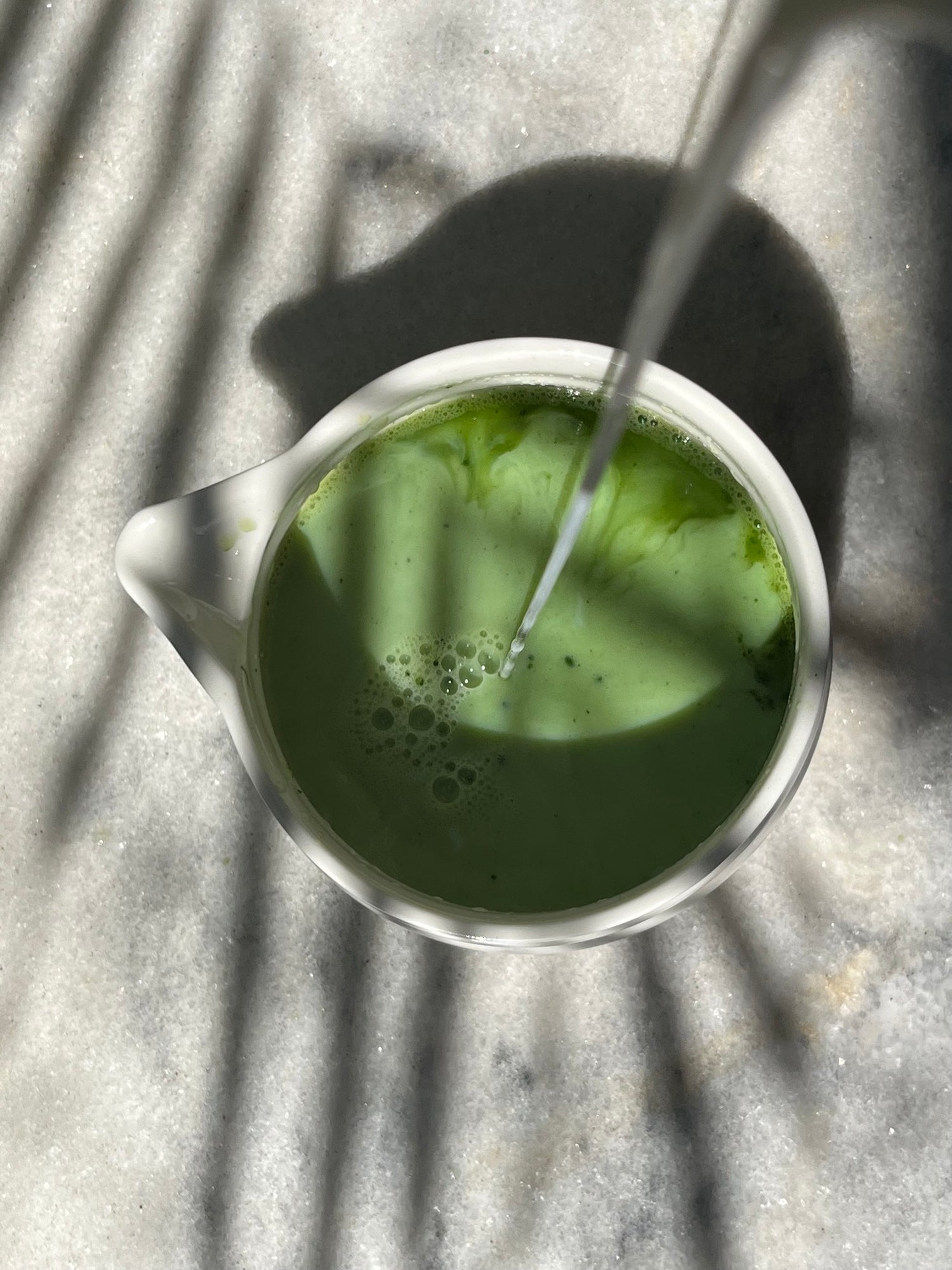
2. Wasser hinzufügen
Gieße vorsichtig 70–100 ml des vorbereiteten ca. 80 °C heißen Wassers in die Schale.
Achte darauf, dass das Wasser nicht zu heiß ist, damit der Matcha nicht bitter wird und Nährstoffe enthalten bleiben.
Man kann auch kaltes Wasser für die Zubereitung nehmen.
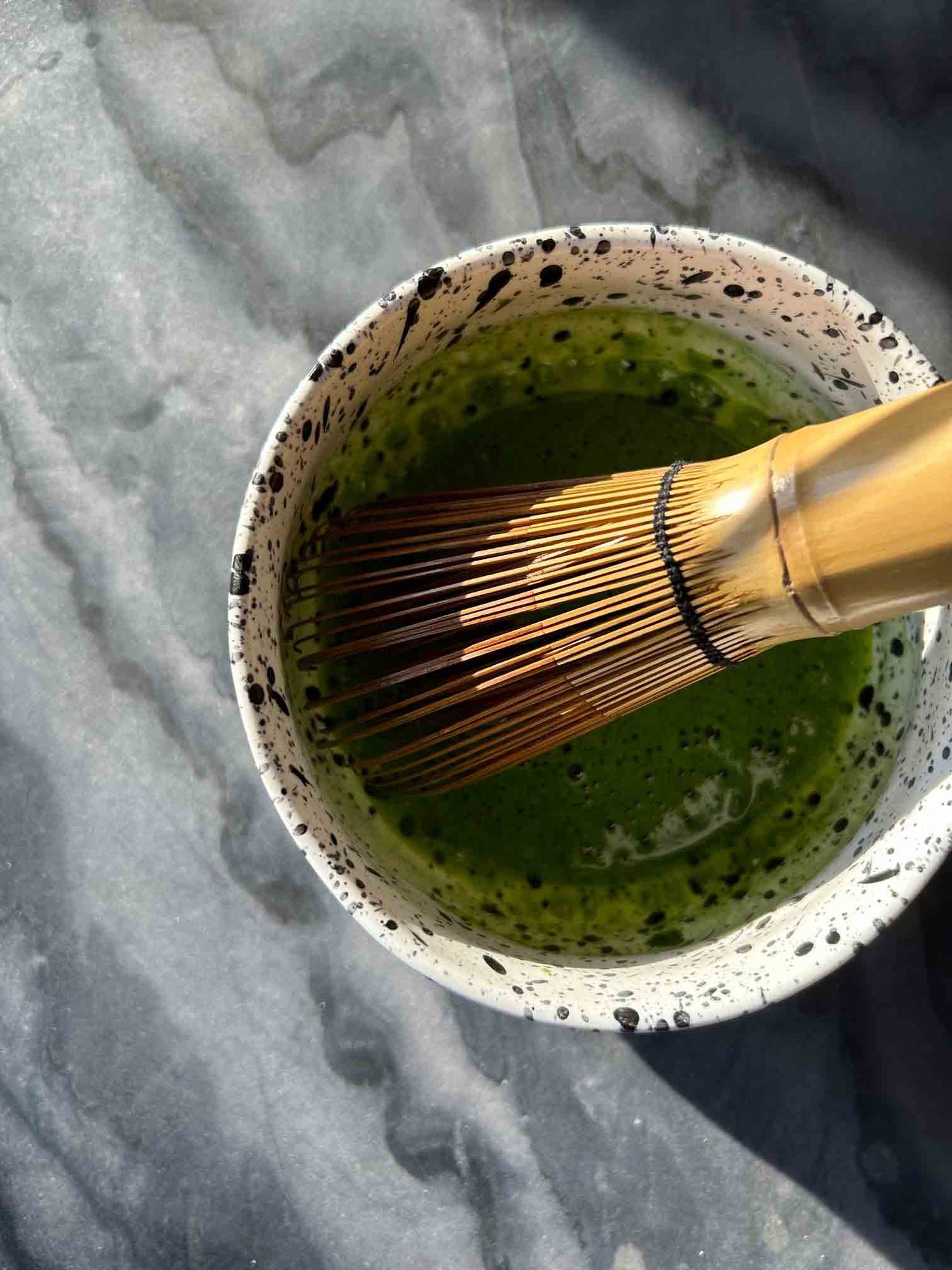
3. Schlagen
Greif den Chasen und schlage den Tee schnell in einer W- oder M-Form, bis sich eine fluffige Schaumschicht bildet. Es sollten sich kleine Bläschen auf der Oberfläche bilden.
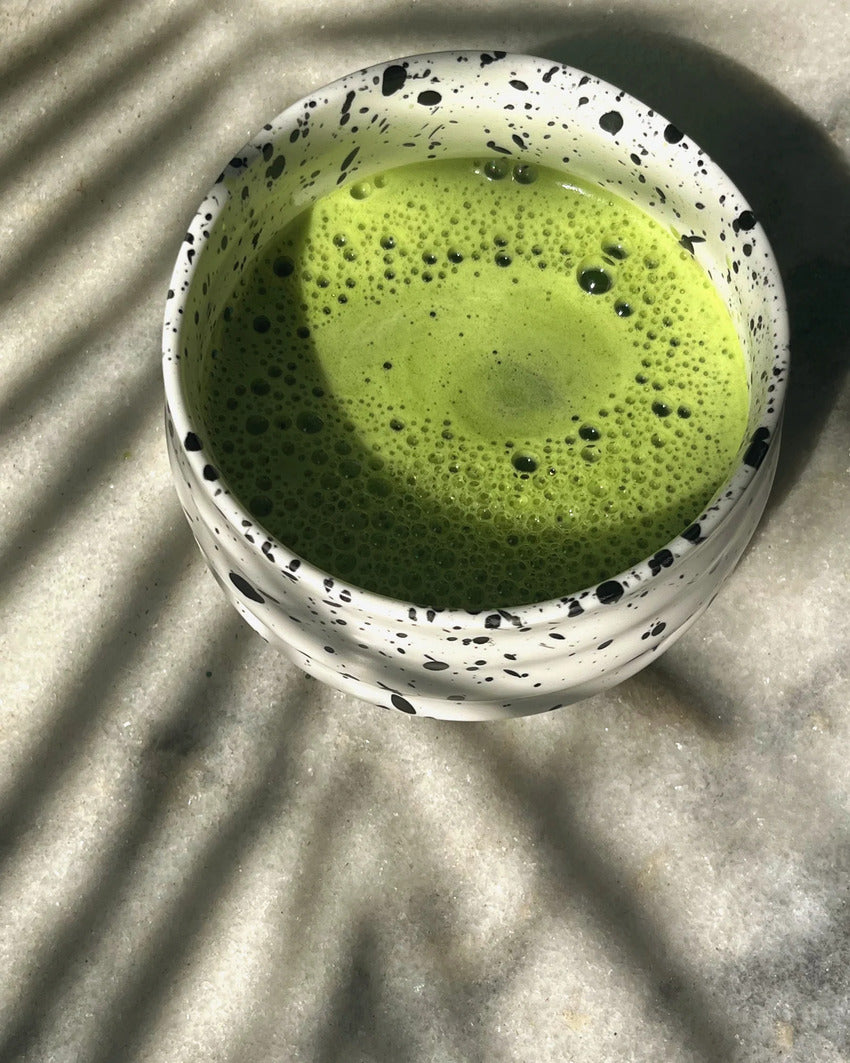
4. Genießen
Nimm dir einen Moment, um den frisch zubereiteten Matcha mit all seinen Benefits zu schätzen und Dankbarkeit auszudrücken, bevor du ihn in kleinen Schlucken trinkst. In Japan sagt man begleitend dazu : ITADAKIMASU (頂きます)

Erlebe deinen Matcha Moment
Das perfekte Starter-Set für dich
✔ Enthält alles, was du für den Einstieg brauchst
✔ Spart Zeit und sorgt für die richtige Zubereitung
✔ Hochwertiger Matcha in Bio-Qualität
✔ Ein traditioneller Bambusbesen für perfekte Ergebnisse
Tipps zur Matcha-Zubereitung
- Wassertemperatur: Achte darauf, dass das Wasser nicht kocht, um das volle Aroma des Matchas zu bewahren.
- Schaumbildung: Ein feiner, cremiger Schaum ist das Zeichen eines perfekten Matchas.
- Matcha-Menge: Experimentiere mit der Menge des Pulvers, um deinen individuellen Geschmack zu treffen.
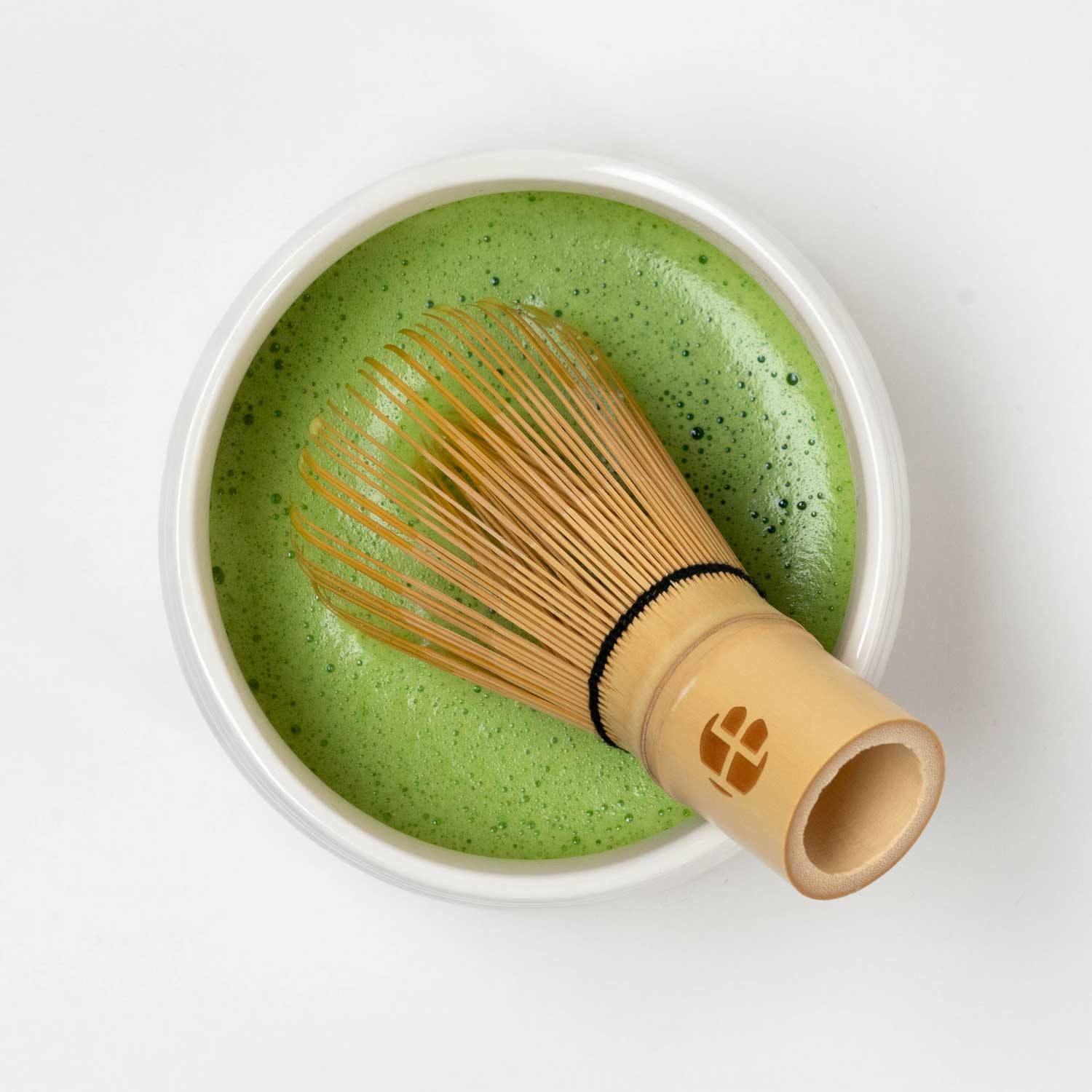
So verwendest du deinen Matcha-Besen richtig
Der Chasen, also der traditionelle Matcha-Besen, ist unverzichtbar für die perfekte Zubereitung – doch wie pflegt und benutzt man ihn eigentlich richtig? In diesem Guide zeigen wir dir, worauf es ankommt, damit dein Matcha immer schön schaumig wird und dein Besen lange hält.
Moderne Zubereitungsarten
Abseits der klassischen Herangehensweise eröffnet sich eine Welt moderner Genussmöglichkeiten für Matcha. Insbesondere Matcha Latte und Iced Matcha erfreuen sich großer Beliebtheit und stellen eine köstliche Erfrischung dar.
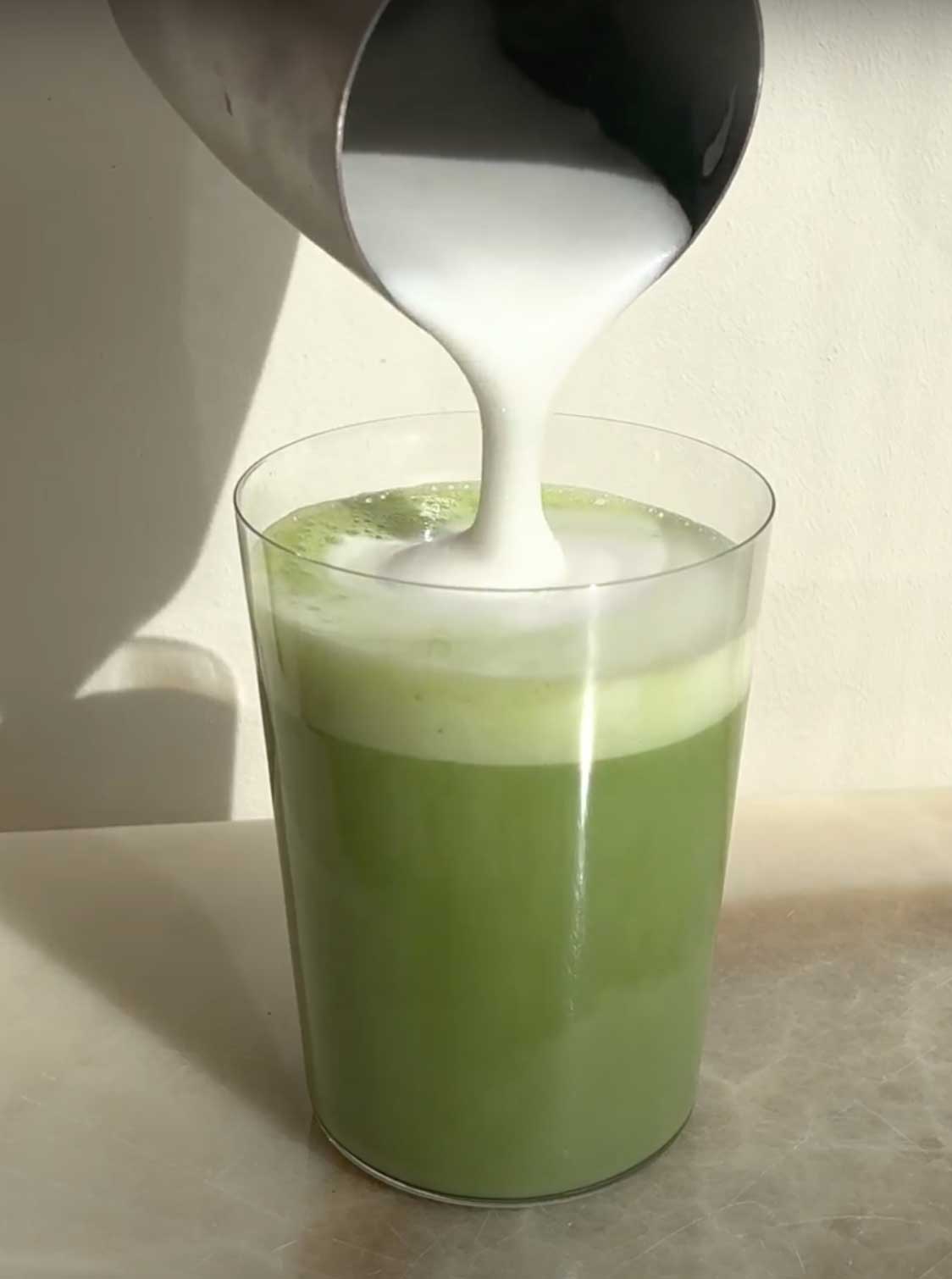
Matcha Latte
Matcha Latte ist von einem himmlischen Zusammenspiel aus cremiger Milch und dem reichen, herzhaften Aroma des grünen Tees geprägt. Wie dir diese Gaumenfreude gelingt, erfährst du in diesem Beitrag.
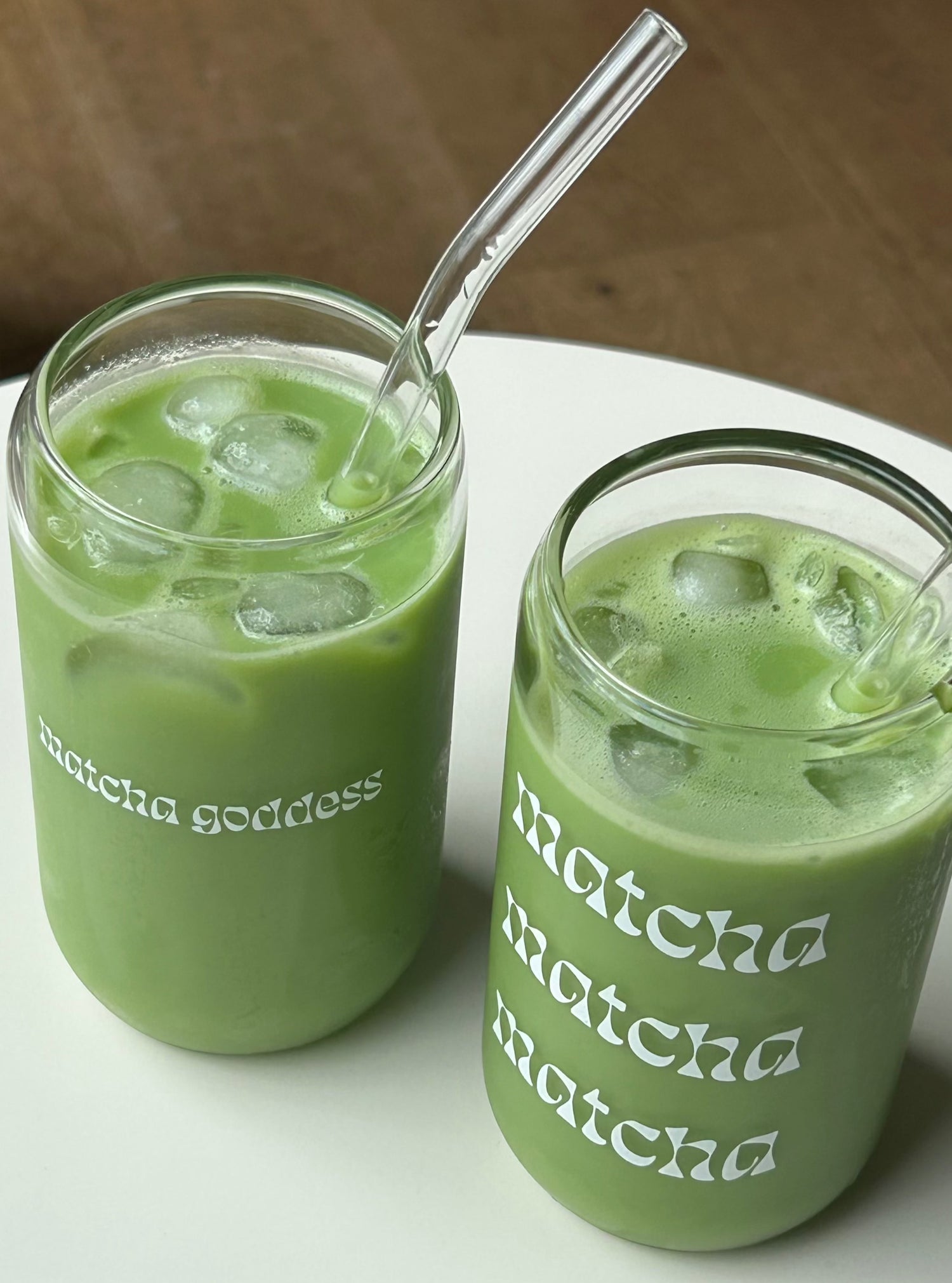
Iced Matcha
An heißen Sommertagen ist Iced Matcha ein erfrischender Genuss, der die Sinne auf vielseitige Weise berührt. Entdecke in unserem Guide, wie du dieses belebende Kultgetränk selbst herstellst.
Kann Matcha kalt zubereitet werden?
Für warme Tage oder wenn es mal schnell gehen muss, eignet sich kalt angerührter Matcha hervorragend. Die Zubereitung im Shaker ist eine beliebte Variante. Dafür verwendest du ein bis vier Messlöffel Matcha-Pulver und gibst je nach Vorliebe 150 bis 500 Milliliter Wasser hinzu. Das Ganze wird im Anschluss kräftig geschüttelt, wobei zusätzliche Eiswürfel den Matcha zu einem idealen Sommergetränk erheben.
Dank der niedrigen Wassertemperatur bleiben die wertvollen Vitamine erhalten. Das Grundrezept kann vielfältig variiert werden, indem du Milch, Eiscreme oder andere Zutaten hinzufügst, um regelmäßig Abwechslung in die Teekreation zu bringen.
FAQs
Wie lagere ich Matcha am besten?
Bewahre Matcha immer in einem luftdichten Behälter an einem kühlen, dunklen Ort auf, um seine Frische und Farbe zu erhalten.
Wie lange ist Matcha haltbar?
Ungeöffnet ist Matcha mehrere Monate haltbar. Nach dem Öffnen ist es am besten, ihn innerhalb von 1–2 Monaten zu verbrauchen.
Kann Matcha schlecht werden?
Matcha verliert mit der Zeit seinen Geschmack und verfärbt sich, besonders wenn er falsch gelagert wird. Sollte er bitter schmecken, ist das ein Zeichen dafür, dass er verdorben ist.
Wie erkenne ich, ob mein Matcha noch gut ist?
Guter Matcha zeichnet sich durch eine leuchtend grüne Farbe und einen frischen, leicht süßlichen Geruch aus. Verfärbungen und ein stumpfes Aroma sind Anzeichen dafür, dass der Matcha seine beste Zeit hinter sich hat.
Die Faszination Matcha
Matcha, das strahlend grüne Pulver aus Japan, repräsentiert weit mehr als ein einfaches Getränk – es verkörpert eine reiche Geschichte, tief verwurzelte Traditionen und bedeutungsvolle Rituale. Die Faszination um Matcha geht über seinen einzigartigen Geschmack hinaus. Sie begründet sich in der Kunstfertigkeit seiner Herstellung, der spirituellen Bedeutung seiner Zeremonie und der modernen Wiederentdeckung als vielseitiges Superfood.
-
Matcha-Zubereitung: ein Erbe mit Tradition
Seine Ursprünge reichen bis in die Praktiken des Zen-Buddhismus in Japan zurück, wo Matcha nicht nur verwendet wurde, um die Aufmerksamkeit während der Meditation zu steigern, sondern auch ein zentrales Element in der hoch ritualisierten Teezeremonie war, dem Chanoyu. Diese Zeremonie betont Harmonie, Respekt, Reinheit und Stille – Werte, die in jedem Schluck Matcha widerhallen.
-
Ein Symbol der Perfektion
Die Herstellung von Matcha ist eine Kunstform, die jahrelange Erfahrung erfordert. Die Teeblätter (Tencha) werden sorgfältig von Hand geerntet, gedämpft und langsam in Granitsteinmühlen zu einem feinen Pulver gemahlen, das so intensiv ist, dass es in der traditionellen japanischen Malerei als Pigment verwendet wurde. Dieser Prozess bewahrt nicht nur die strahlend grüne Farbe und den gehaltvollen Geschmack, sondern auch die gesamten Nährstoffe der Blätter.
-
Eine Quelle der Inspiration
In den letzten Jahren hat Matcha die Welt im Sturm erobert, weit über die Grenzen Japans hinaus. Er inspiriert Köche, Baristas und Gesundheitsexperten zu neuen Kreationen – von Matcha-Latte und Smoothies bis hin zu Desserts und Hautpflegeprodukten. Die Vielseitigkeit und die Verbindung von Tradition und Moderne machen Matcha zu einem Symbol der zeitgenössischen kulinarischen Innovation.


